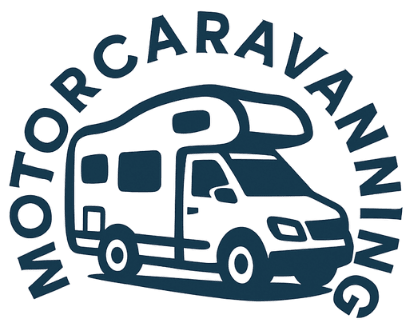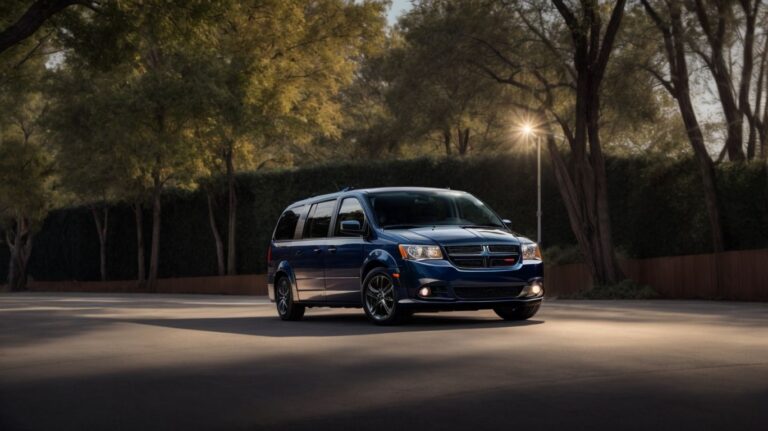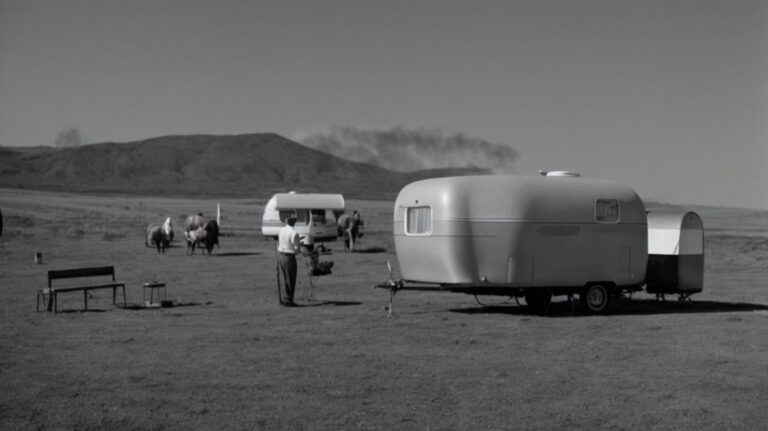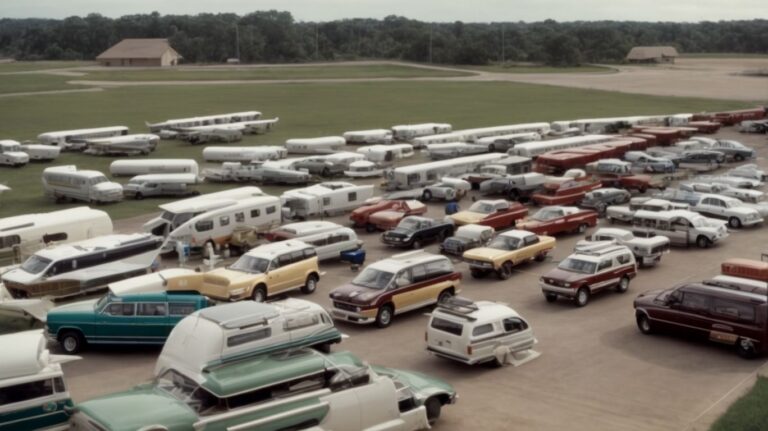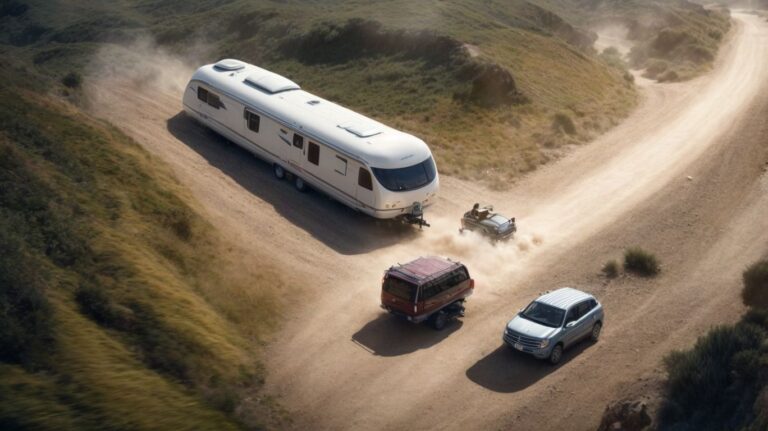Addressing the Shaking Phenomenon in Caravans
Are you a caravan owner who has experienced the unsettling shaking phenomenon while on the road?
In this article, we will explore the causes of shaking in caravans, including uneven road surfaces, improper weight distribution, strong winds, and mechanical issues.
We will also provide practical tips on how to prevent shaking, such as proper weight distribution, investing in stabilizing equipment, adjusting driving habits, and regular maintenance.
We will discuss the risks of shaking in caravans and what to do if shaking occurs during a trip.
Stay tuned for valuable insights to ensure a safe and smooth journey with your caravan.
Key Takeaways:
What Is the Shaking Phenomenon in Caravans?
The shaking phenomenon in caravans refers to the irregular and often unsettling vibrations experienced by occupants while the caravan is in motion, leading to discomfort and potential safety concerns.
These vibrations can be attributed to various factors such as road conditions, tire pressure, suspension systems, and even the weight distribution within the caravan. Investigations conducted by the National Academies Press have highlighted the significance of these factors in understanding and addressing the shaking phenomenon in caravans.
N. Kober, in their research, emphasizes the importance of considering both external conditions and internal components of the caravan to effectively mitigate the shaking effect. The impact of this phenomenon on passengers ranges from mere inconvenience to severe motion sickness, making it a critical area for further study and improvement in caravan design and maintenance.
What Causes the Shaking in Caravans?
The shaking in caravans can be attributed to various factors such as uneven road surfaces, improper weight distribution, strong winds, and mechanical issues, each contributing to the overall instability and discomfort experienced by passengers.
Uneven road surfaces are a common culprit for caravan shaking, with bumps and potholes causing jolts that lead to vibrations throughout the vehicle. This constant jarring can create a disruptive environment inside the caravan, disrupting the peace and comfort of its occupants.
Improper weight distribution is another significant factor that exacerbates shaking. When the weight is unevenly distributed, it can throw off the caravan’s balance, making it more susceptible to swaying and oscillations, especially during turns or sudden stops.
Strong winds also play a crucial role in caravan shaking, exerting external forces that push and pull the vehicle off its intended path. Crosswinds, in particular, can cause the caravan to sway uncontrollably, making it challenging for the driver to maintain stability.
Uneven Road Surfaces
Uneven road surfaces are a common cause of shaking in caravans, as the irregular terrain leads to constant jolts and vibrations that can disrupt the stability of the vehicle and impact the comfort of passengers.
Motion Activated RV Step Lights, 10 LED Battery Operated Motorhome Motion Sensor led Light Strip, Magnetic Night Light Bar for Motorhome Travel,Travel Trailers, Camper (2 Pack)
- 【Infrared Induction Motion Detection】Motion sensor light on the PIR sensor can detect human movement, 10 feet once your approach is detected, the rv step lights will automatically turn on in the dark, in the absence of detected motion or other light sources, 18 seconds after the automatic shutdown, a large degree of power savings and improved durability.
Camco TST MAX RV Toilet Treatment Drop-INs - Control Unwanted Odors & Break Down Waste and Tissue - Safe Septic Tank Treatment - Orange Scent, 30-Pack (41183)
- Toilet Deodorizer With Reactive Odor-Eliminating Technology: Experience a powerful RV odor eliminator that stops RV black tank odors for up to 7 days. Just (1) toilet drop in treats camper toilets with up to a 40-gallon tank.
THANSTAR Collapsible Dish Drying Rack Portable Dinnerware Drainer Organizer for Kitchen RV Campers Travel Trailer Space Saving Kitchen Storage Tray
- 【Food Grade Material】Made from eco-friendly PP+TPR material that is BPA Free and Food-Grade. The flexible material allows the dish strainers for kitchen counter to collapse flat for easy space-saving and storage, making the most of your kitchen countertop.
Camco RhinoFLEX 20-Ft RV Sewer Hose Kit - Features Clear Elbow Fitting w/Removable 4-in-1 Adapter - Connects to 3” Slip or 3”/3.5”/4” NPT Threaded Sewer Connection (39742)
- Superior RV Tank Dumping: Streamline RV holding tank dumping with Camco’s RhinoFLEX 20' Camper Sewer Hose Kit. Built tough & flexible, this all-inclusive RV septic hose system provides simple & effective tank dumping on your camping adventures.
Camco Tastepure RV Water Filter - New & Advanced RV Inline Water Filter with Flexible Hose Protector - GAC & KDF Water Filter - Made in USA - Camping Essentials for Fresh Drinking Water (40043)
- Advanced 6-Step Filtration Technology: Experience the extraordinary power of Hex-Flow Technology & its remarkable 6-step filtration process. Every layer works together to provide you with water that is exceptionally clean.





These road imperfections challenge both drivers and passengers, testing their tolerance for bumpy rides. Students studying vehicle dynamics often delve into the intricate mechanisms behind these vibrations, exploring how collaboration between engineers and designers can enhance caravan suspension systems to mitigate the effects of uneven roads.
Collaboration between experts in the field may lead to innovative solutions that reduce the discomfort caused by such shaky terrains. Understanding the dynamics of vehicle response to varying surfaces is crucial for enhancing the overall travel experience.
Improper Weight Distribution
Improper weight distribution within a caravan can lead to excessive swaying and rocking motion, causing the vehicle to become unstable and prone to increased shaking during travel.
Proper weight management plays a crucial role in caravan stability, influencing the overall safety of the journey. When weight is unevenly distributed, it can disrupt the balance of the caravan, leading to potential accidents and hazards on the road.
- Teaching passengers about the importance of distributing weight evenly and collaboratively loading the caravan can significantly reduce the risk of swaying and rocking.
- Through research and practical experience, caravan enthusiasts have identified core strategies to optimize weight distribution, including placing heavier items closer to the center and adjusting load placement based on the specific caravan model.
Strong Winds
Strong winds can exacerbate the shaking in caravans by exerting lateral forces on the vehicle, leading to swaying and instability that can intensify the vibration experienced by passengers.
When encountering gusty winds while driving a caravan, the disruptive airflow around the vehicle can create unpredictable movements, amplifying the side-to-side motion. This phenomenon can be especially challenging for drivers who may struggle to maintain control over the caravan’s trajectory. Understanding the principles of vehicle dynamics and educational practices such as the Miller-Kurzrok test can enhance a driver’s capability to anticipate and counteract the effects of wind-induced swaying. By applying proper techniques and adjustments, drivers can mitigate the risks associated with wind-related instabilities.
Mechanical Issues
Mechanical issues in caravans, such as worn-out suspension components or tire imbalances, can significantly contribute to the shaking phenomenon, affecting the overall ride quality and safety of passengers.
This shaking can be unsettling for those inside the caravan and compromise the vehicle’s stability, especially during high-speed maneuvers or inclement weather conditions.
Regular maintenance and thorough inspection of key components like brakes, axles, and steering systems are crucial to identify and address potential issues before they escalate into safety hazards.
An improperly maintained caravan not only puts occupants at risk but can also lead to increased wear and tear on the vehicle, ultimately impacting its longevity and performance.





Understanding the curriculum of caravan care and following manufacturer instructions for routine service can help owners avoid costly repairs and ensure a smooth and safe travel experience.
Neglecting these maintenance tasks can lead to heightened levels of IgA (a specific antibody) in response to stress and danger, highlighting the physiological impact of compromised vehicle integrity on passengers’ well-being.
How to Prevent Shaking in Caravans?
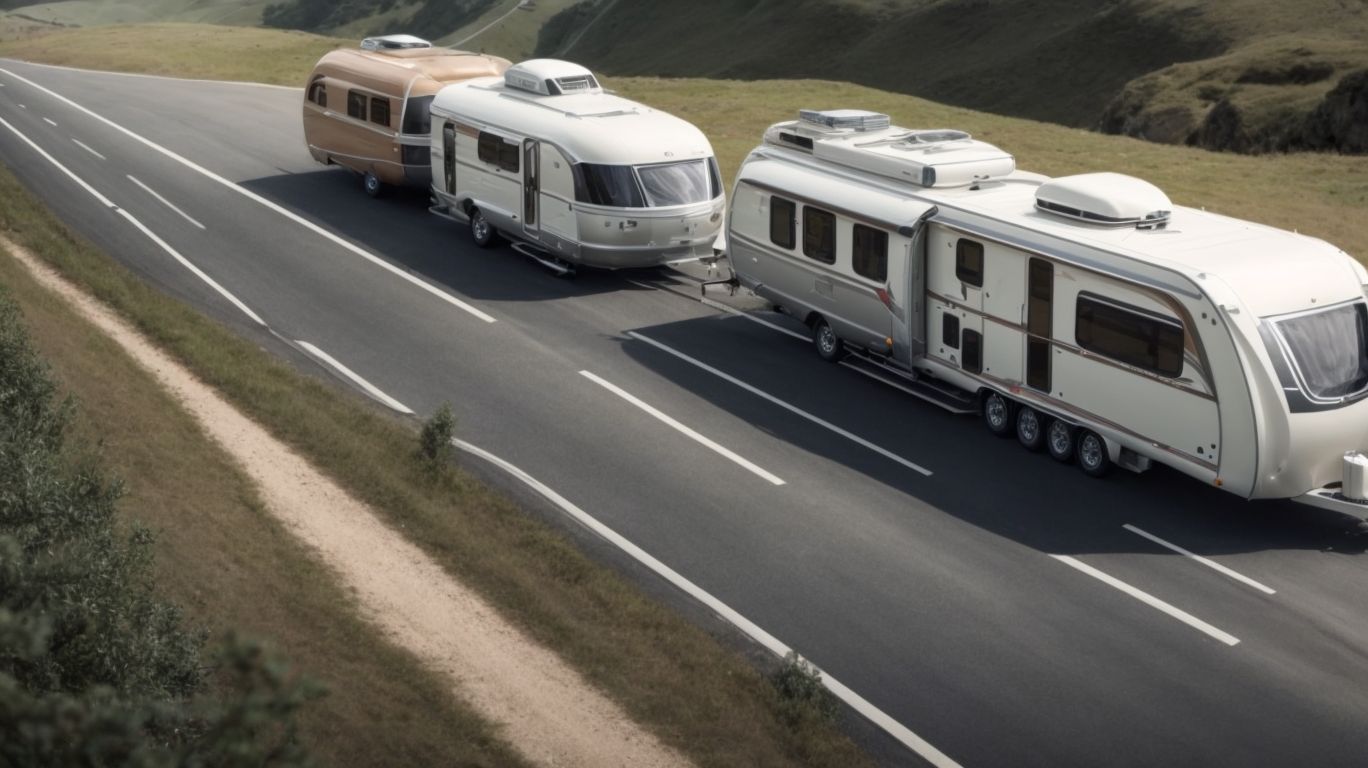
Credits: Motorcaravanning.Com – Alexander Moore
Preventing shaking in caravans requires implementing proactive measures such as proper weight distribution, investing in stabilizing equipment, adjusting driving habits, and adhering to regular maintenance schedules to ensure optimal performance and passenger comfort.
Along with these strategies, it is crucial for passengers to engage in collaborative efforts during caravan journeys. By working together, passengers can help in sensemaking – interpreting and understanding the causes of shaking. This shared understanding can lead to the identification of crosscutting concepts that may contribute to the issue.
- Ensuring even weight distribution among passengers’ belongings is essential to maintain balance inside the caravan, which can greatly reduce the occurrence of shaking.
- Regularly inspecting and maintaining the caravan’s Immunoglobulin class components, such as the suspension system and tires, can prevent potential issues that may lead to shaking during travel.
Properly Load and Distribute Weight
Properly loading and distributing weight in a caravan is essential to maintaining stability and reducing the likelihood of shaking, ensuring a safe and comfortable travel experience for all occupants.
When weight distribution in a caravan is not adequately managed, it can lead to a range of adverse effects on vehicle dynamics. Uneven or improper weight distribution may cause the caravan to sway excessively, especially when being towed at higher speeds, posing a significant safety risk. This can result in loss of control over the vehicle, increased fuel consumption, and accelerated wear on tires and suspension components. Investigative studies have shown that correct weight distribution can prevent accidents caused by instability, making it a crucial aspect of caravan towing practices.
Invest in Stabilizing Equipment
Investing in stabilizing equipment, such as sway bars or leveling systems, can help minimize shaking in caravans by enhancing the vehicle’s suspension capabilities and reducing lateral movement during travel.





These stabilizing tools play a crucial role in ensuring a smoother and safer journey for caravan passengers.
- Sway bars, for instance, are designed to help distribute weight more evenly across the vehicle, thereby reducing the swaying motion commonly experienced on uneven roads or during windy conditions.
- On the other hand, leveling systems aid in maintaining the caravan’s balance and stability while parked, preventing uncomfortable tilting or rocking movements.
Adjust Driving Habits
Adopting appropriate driving habits, such as maintaining consistent speeds, avoiding sudden maneuvers, and planning routes to minimize rough terrain, can help mitigate shaking in caravans and enhance overall road safety.
These practices play a crucial role in preventing undue stress on the vehicle and its components. By adhering to proper driving techniques, drivers not only ensure their safety but also contribute to the longevity of their caravan. Educating oneself on the nuances of caravan travel and conducting regular maintenance checks can further complement these efforts.
Considering the Miller-Kurzrok test can provide valuable insights into the stability and handling of the caravan. Implementing the recommendations stemming from this test can significantly reduce the likelihood of shaking occurrences during journeys.
Regularly Maintain and Service Caravan
Regular maintenance and servicing of the caravan, including checks on suspension components, tire pressure, and alignment, are crucial in preventing mechanical issues that could lead to shaking, ensuring a safe and reliable travel experience.
By following a structured routine maintenance schedule, caravan owners can safeguard their investment and prioritize passenger safety. Instructions from the manufacturer play an essential role in guiding the inspection process and identifying potential issues early on. For instance, inspecting the caravan’s scaffold for wear and tear is imperative, as any damage to this critical component can greatly impact ride comfort and stability. Routine diagnostics of systems like the IgA immune response within the caravan’s mechanical structure can reveal underlying problems that may contribute to vibrations or irregular movements on the road.
What Are the Risks of Shaking in Caravans?
The risks associated with shaking in caravans include potential damage to the vehicle and personal belongings, as well as an increased risk of accidents due to compromised stability and control while on the road.
When shaking occurs inside a caravan, it can lead to a domino effect of issues that cascade from one problem to another. The instability caused by shaking can unsettle passengers, leading to discomfort and potential motion sickness. Along with this, any unsecured belongings within the caravan can become projectiles, posing a danger to the occupants. The constant movement can strain the vehicle’s structural integrity, potentially causing mechanical failures or damages that may require costly repairs. This not only jeopardizes the safety of the passengers but also adds financial burdens to the caravan owner.
Strategies must be implemented to minimize shaking, such as evenly distributing weight, securing loose items, and selecting appropriate driving speeds to maintain stability. The role of a knowledgeable teacher or guide becomes crucial in educating caravan users about the importance of these precautions. Immunoglobulin, which plays a vital role in the body’s immune response, can be at risk of agitation and disruption if subject to excessive shaking, affecting its effectiveness in combating infections and diseases. Therefore, understanding the repercussions of continuous shaking in caravans is essential for ensuring the safety of passengers, protecting personal belongings, and maintaining overall road safety.”
Damage to Caravan and Belongings
Shaking in caravans can result in damage to the vehicle structure, internal fittings, and personal belongings, highlighting the importance of addressing the root causes of shaking to prevent costly repairs and losses.





Teaching caravan owners about the potential consequences of excessive shaking can help raise awareness about the risks involved in failing to secure items properly. Proper education on IgA antibodies and their impact on structural integrity can further underline the significance of implementing preventative measures.
Conducting regular inspections and maintenance checks, such as the SCMC-test, can aid in identifying weak points susceptible to damage from shaking, enabling proactive reinforcement and safeguarding of caravan structures.”
Risk of Accidents
The increased risk of accidents associated with shaking in caravans stems from compromised stability, reduced driver control, and unpredictable vehicle behavior, underscoring the importance of addressing shaking issues for road safety.
Shaking can be particularly hazardous when navigating sharp turns or encountering strong winds, as it can exacerbate swaying motions and destabilize the caravan. This not only puts the occupants at risk but also poses a danger to other road users.
Education plays a crucial role in mitigating these risks, as drivers need to be aware of the factors that contribute to shaking, such as improper loading, tire pressure, and speed.
By understanding the Core Ideas of vehicle dynamics and implementing proactive measures like installing sway bars and weight distribution systems, drivers can enhance their vehicle’s stability and control, reducing the likelihood of accidents caused by shaking.
What to Do if Shaking Occurs During a Trip?

Credits: Motorcaravanning.Com – Jason Jackson
If shaking occurs during a trip, it is crucial to pull over safely, check weight distribution, adjust driving habits for smoother operation, and seek professional help if the shaking persists to ensure the safety and well-being of all passengers.





After pulling over, the next step is to thoroughly inspect the caravan’s weight distribution to ensure it is balanced correctly. Uneven weight distribution can often be a leading cause of shaking while on the road, impacting the stability and handling of the vehicle. Ensuring that the heavy items are securely stored and distributed evenly throughout the caravan plays a vital role in minimizing shaking incidents.
Consider adjusting your driving habits to reduce the likelihood of shaking. Maintaining a consistent speed, avoiding sudden braking or accelerating, and navigating corners smoothly can significantly contribute to a more stable ride. This adjustment aligns with the principles of safe driving techniques, an essential component of a comprehensive elementary school curriculum.
Pull Over and Check Weight Distribution
If there is shaking during a trip, it is advisable to pull over at a safe location, assess the weight distribution within the caravan, and make necessary adjustments to rebalance the load for improved stability and comfort.
Checking the weight distribution is crucial as it directly impacts the overall stability of the caravan. Uneven weight distribution can result in swaying, wobbling, or even tipping over, posing serious risks to both the passengers and other road users. By taking the time to investigate and adjust the weight placement, drivers can ensure a safer and more comfortable journey.
- One of the best practices recommended by experts is to regularly inspect weight distribution before embarking on a trip to prevent sudden shaking incidents.
- According to the National Academies Press, proper weight distribution enhances vehicle control, reduces the possibility of accidents, and prolongs the lifespan of the caravan.
Adjust Driving Habits
When experiencing shaking while driving a caravan, it is essential to adjust driving habits by maintaining steady speeds, avoiding sudden maneuvers, and adapting the route to minimize rough terrains, ensuring a smoother and safer travel experience for all occupants.
It is also crucial to incorporate regular vehicle inspections as part of your preventive practices to identify and address potential issues that could contribute to the shaking phenomenon. By following the manufacturer’s guidelines for maintenance and keeping an eye on tire pressures, wheel alignment, and suspension components, you can enhance the stability of your caravan.
In cases where persistent shaking occurs despite these adjustments, seeking professional assistance from an experienced mechanic or reaching out to organizations such as E.A. Davis for detailed investigation can help pinpoint underlying causes and implement effective solutions to ensure optimal driving performance.
Seek Professional Help
If shaking persists despite initial checks and adjustments, it is recommended to seek professional assistance from qualified mechanics or caravan service providers to diagnose and address underlying mechanical issues contributing to the shaking phenomenon, ensuring the safety and integrity of the vehicle.
Professional help offers the advantage of having experienced individuals thoroughly assess the caravan, using specialized tools and techniques to detect even subtle faults that may escape untrained eyes.
Expert interventions are crucial for implementing precise repairs based on the identified issues, preventing further damage and potential hazards down the road.





One notable technique employed in such evaluations is the Miller-Kurzrok test, recognized for its accuracy in pinpointing structural weaknesses and alignment irregularities that could be the root cause of the persistent shaking.
Frequently Asked Questions
What is the shaking phenomenon in caravans?
The shaking phenomenon in caravans, also known as the “trailer wobble” or “trailer sway”, refers to the side-to-side movement of a caravan while it is being towed.
What causes the shaking phenomenon in caravans?
There are several factors that can contribute to the shaking phenomenon in caravans, including high winds, uneven road surfaces, improper loading, and incorrect weight distribution.
How can I prevent my caravan from shaking?
To prevent your caravan from shaking, make sure it is loaded properly with the heaviest items placed near the axles and the lighter items towards the front. You can also install stabilization devices such as sway bars or weight distribution hitches.
What are some signs that my caravan is experiencing the shaking phenomenon?
If your caravan is swaying back and forth, noticeably leaning to one side, or causing your tow vehicle to veer off course, these are all signs that it is experiencing the shaking phenomenon.
Can the shaking phenomenon in caravans be dangerous?
Yes, if the shaking is severe enough, it can cause loss of control and potentially lead to accidents. It is important to address the shaking phenomenon in caravans to ensure safe towing.
Are there any laws or regulations regarding the shaking phenomenon in caravans?
Yes, depending on your location, there may be laws or regulations regarding the maximum allowable sway in caravans. It is important to research and follow these regulations to ensure safe and legal towing.
